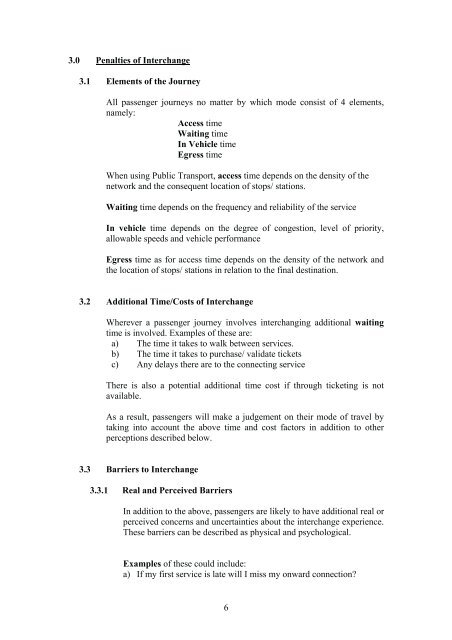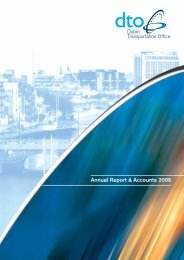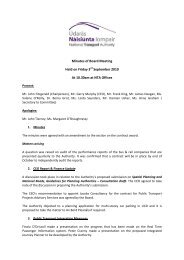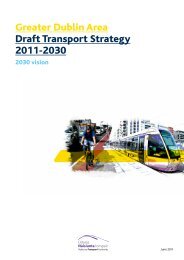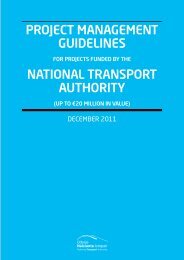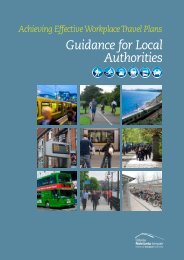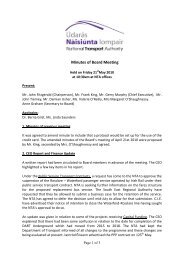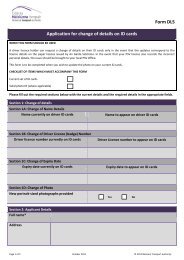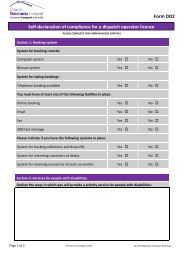Advice Note on Public Transport Interchange - National Transport ...
Advice Note on Public Transport Interchange - National Transport ...
Advice Note on Public Transport Interchange - National Transport ...
You also want an ePaper? Increase the reach of your titles
YUMPU automatically turns print PDFs into web optimized ePapers that Google loves.
3.0 Penalties of <strong>Interchange</strong>3.1 Elements of the JourneyAll passenger journeys no matter by which mode c<strong>on</strong>sist of 4 elements,namely:Access timeWaiting timeIn Vehicle timeEgress timeWhen using <strong>Public</strong> <strong>Transport</strong>, access time depends <strong>on</strong> the density of thenetwork and the c<strong>on</strong>sequent locati<strong>on</strong> of stops/ stati<strong>on</strong>s.Waiting time depends <strong>on</strong> the frequency and reliability of the serviceIn vehicle time depends <strong>on</strong> the degree of c<strong>on</strong>gesti<strong>on</strong>, level of priority,allowable speeds and vehicle performanceEgress time as for access time depends <strong>on</strong> the density of the network andthe locati<strong>on</strong> of stops/ stati<strong>on</strong>s in relati<strong>on</strong> to the final destinati<strong>on</strong>.3.2 Additi<strong>on</strong>al Time/Costs of <strong>Interchange</strong>Wherever a passenger journey involves interchanging additi<strong>on</strong>al waitingtime is involved. Examples of these are:a) The time it takes to walk between services.b) The time it takes to purchase/ validate ticketsc) Any delays there are to the c<strong>on</strong>necting serviceThere is also a potential additi<strong>on</strong>al time cost if through ticketing is notavailable.As a result, passengers will make a judgement <strong>on</strong> their mode of travel bytaking into account the above time and cost factors in additi<strong>on</strong> to otherpercepti<strong>on</strong>s described below.3.3 Barriers to <strong>Interchange</strong>3.3.1 Real and Perceived BarriersIn additi<strong>on</strong> to the above, passengers are likely to have additi<strong>on</strong>al real orperceived c<strong>on</strong>cerns and uncertainties about the interchange experience.These barriers can be described as physical and psychological.Examples of these could include:a) If my first service is late will I miss my <strong>on</strong>ward c<strong>on</strong>necti<strong>on</strong>?6


